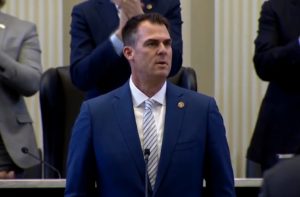Tennessee Governor Calls for Review of State’s “Outdated” Funding Formula
The Tennessee governor and the state’s commissioner of education announced a review of Tennessee’s educational funding formula last month, after years of debate and complaints about the…

The Tennessee governor and the state’s commissioner of education announced a review of Tennessee’s educational funding formula last month, after years of debate and complaints about the complexity of the way the funding is calculated. Deemed “system-centered” as opposed to student-centered, the formula will get an overhaul if state leaders have their way.
“We will pursue a rigorous review of our state’s education funding to ensure we are properly investing in students and stewarding our resources well,” said Governor Bill Lee.
The Tennessee formula for funding public education – called the Basic Education Program – has been in place since 1992.
A report by the nonprofit Beacon Center, a public policy organization, details the “antiquated and complex” system by which Tennessee determines how educational funds are allocated. Using a resource-based model, the state currently distributes funding based on the estimated resources needed for student enrollment. This approach assumes, incorrectly, that districts generally have the same needs – regardless of their students’ location, individuality and demographics.
A student-centered, or student-based formula, used in the majority of US states, is the more common approach to funding schools. Under this model, states provide a set base amount per student, and then give additional funds for students who have higher needs or fall into specific populations (such as economically disadvantaged or those who are English language learners).
“We have the most complicated funding formula in the country,” Ron Shultis, the Beacon Center’s director of policy and research, told local media. “Literally no one does what ours does. For example in Georgia, you can find out how much is funded per student on one page at the state department of education, anyone can look at it and understand it, meanwhile here in Tennessee it’s a complicated annual report that’s included with 60 tables put out by the Department of Education.”
The Governor’s call for change will include gathering input from school and district leaders, elected officials, families, and members of the general public. His hope is that Tennessee can develop a system that prioritizes students, empowers parents to engage in education, and ensures that all students receive a high-level education regardless of their location or learning needs.
“Tennessee’s students are the future of our state, and we’ve got to be sure our public schools are well-equipped to prepare each and every one of them for lifelong success,” said education commissioner Penny Schwinn. “Consistent with our focus to continuously improve the academic achievement of all Tennessee students, we are excited to open public conversations and discuss an investment strategy that aligns with those goals and values.”



